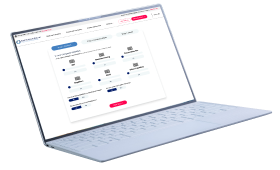
Understand your company's position and learn more about the options available
Require Immediate Support? Free Director Helpline: 0800 644 6080
Free Director Helpline: 0800 644 6080
Published:
The terms insolvency and liquidation are sometimes used interchangeably, which can lead people to think they’re the same thing. It’s true that neither is good for your business, but there are some big differences between them. Here we explain those differences and discuss the steps you can take to avoid them.
The key difference between insolvency and liquidation is that insolvency describes a position where a company cannot pay its financial obligations when they are due. A company that cannot pay its debts is said to be insolvent.
Liquidation, on the other hand, is a formal procedure to close a limited company. You can use liquidation to close an insolvent company, but you can liquidate solvent businesses, too.
Insolvency is a financial position a company is in when it can no longer pay the money it owes to third parties such as landlords, HMRC, suppliers and utility providers. A company is technically insolvent when:
There are several common warning signs of insolvency, such as your overdraft facility always being at its limit, struggling to pay staff and receiving constant creditor pressure and threats of legal action.
It’s important you recognise these signs, as the earlier you realise your company is insolvent and seek help, the better your chances of getting your business back on track and avoiding liquidation.
Liquidation is a formal insolvency procedure to close limited companies. You must appoint a licensed Insolvency Practitioner to liquidate the company on your behalf.
They will sell the company’s assets and pay the proceeds to the shareholders or creditors, depending on whether the business is solvent or insolvent. They’ll then remove the company from the official register and it will cease to exist. In the case of an insolvent business, any debts the company cannot repay will usually be written off.
As a company director, you can voluntarily put your business into solvent or insolvent liquidation. A creditor, such as HMRC or a bank, can also force your business into Compulsory Liquidation to protect its interests or recover a debt.
There are three types of liquidation that can be used depending on the financial position and circumstances of the business.
Here are some of the key ways in which insolvency and liquidation differ:
It’s important to note that company insolvency does not always lead to liquidation. There are informal and formal company rescue procedures that can help to return a business to profitability.
For example, it may be possible to negotiate a payment plan with a creditor to repay a debt. Alternatively, you could explore alternative funding options to access working capital to get the business back on track.
There are also formal procedures that can reverse the fortunes of insolvent companies. A Company Voluntary Arrangement (CVA) is a legally binding agreement that gives you more time to repay your creditors while you continue to trade. Administration is another procedure that can restructure your company and return it to profitability. And even if you do have to liquidate, you could use a Pre-Pack Administration to continue your business with a new company that’s debt-free.
At Real Business Rescue, we provide guidance and advice from the earliest signs of insolvency. We can discuss your circumstances, assess your finances and give you the best possible chance of saving your limited company. On the other hand, if your business is no longer viable, we can liquidate your company and protect your interests. Please contact our team for a free consultation or arrange a meeting at your local office.
Still unsure whether liquidation is right for your company? Don't worry, the experts at Real Business Rescue are here to help. Our licensed insolvency practitioners will take the time to understand the problems your company is facing before recommending the best course of action going forward based on your own unique circumstances.

Complete the below to get in touch
For Ltd Company Directors
What are you looking to do?
Choose below:
We provide free confidential advice with absolutely no obligation.
Our expert and non-judgemental team are ready to assist directors and stakeholders today.

Understand your company's position and learn more about the options available

Find your nearest office - we have more than 100 across the UK. Remote Video Meetings are also available.

Free, confidential, and trusted advice for company directors across the UK.